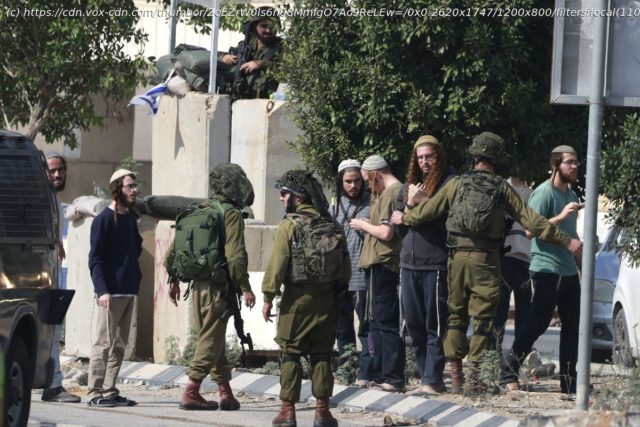With the world focused on Gaza, Israeli settlers and soldiers are increasing attacks on Palestinians in the West Bank.
The world’s eyes have been on Gaza since Hamas’s brutal attack on Israeli citizens on October 7 and Israel’s retaliatory invasion that has killed thousands of Palestinian civilians.
But another front in this long-running conflict is the West Bank, a kidney-bean shaped piece of land on the west bank of the Jordan River and to the east of Israel that is home to nearly 3 million Palestinians and would make up the heart of any future Palestinian state. Alongside those Palestinian cities and villages, however, are Jewish settlements.
Since the Six-Day War of June 1967, the state of Israel has planned and funded Jewish outposts throughout the West Bank; other settlers have moved in without the state’s explicit backing. The settlers believe they have a right to be there, even though most of the international community views the settlements as illegal.
These populations are largely separated by Israel’s complex security infrastructure, including military checkpoints, armed patrols, a separation barrier, and color-coded identification cards and license plates. This system dictates all aspects of daily life for West Bank residents.
Some settlers have for years harassed and attacked the Palestinians living there, often with impunity and occasionally with the support of Israeli soldiers. In the weeks since October 7, however, the rate of violence has significantly increased. It is already the deadliest year since the Second Intifada, and is getting bad enough for the eyes of the world to occasionally leave Gaza and look to the West Bank.
“I continue to be alarmed about extremist settlers attacking Palestinians in the West Bank,” President Joe Biden said in late October, comparing the attacks to “pouring gasoline on fire.”
Meanwhile, popular support for Hamas has surged among Palestinians in the West Bank as faith in the Palestinian Authority plummets.
This escalation of settler violence could, as Vox’s Zack Beauchamp explains, “lead to a deeper entrenchment of Israel’s occupation and, quite possibly, a violent Palestinian response that brings outright war to the West Bank.” That would in turn “weaken the already-slim prospects of a negotiated solution to the Israeli-Palestinian conflict in the foreseeable future,” he writes.
The writer Nathan Thrall is well acquainted with the dual lives of Palestinian and Israeli residents of the West Bank. Thrall spent a decade at the International Crisis Group covering Israel, the West Bank, and Gaza. In his new book A Day in the Life of Abed Salama: Anatomy of a Jerusalem Tragedy, he tells the story of a Palestinian father from the West Bank searching for his son who’s gone missing after a school bus accident.
Thrall spoke with Today, Explained host Noel King about the history of Israeli settlements in the West Bank, and why Israel faces strong criticism for its support of settlers, not just from Palestinians but also from some Israelis and the international community. Read on for an excerpt of the conversation that aired on November 20, edited and condensed for length and clarity, and listen to the full conversation wherever you find podcasts.
Help situate us: What does the West Bank look like? And who lives there?
The West Bank is quite hilly. It has a mountain ridge running through the middle of it, north to south. And it is covered with Israeli settlements. These settlements in the popular imagination are a set of caravans haphazardly erected on a hilltop. [Some newer outposts, particularly illegal ones, do consist largely of portable buildings.
Home
United States
USA — mix Israeli settler violence against Palestinians in the West Bank, briefly explained






